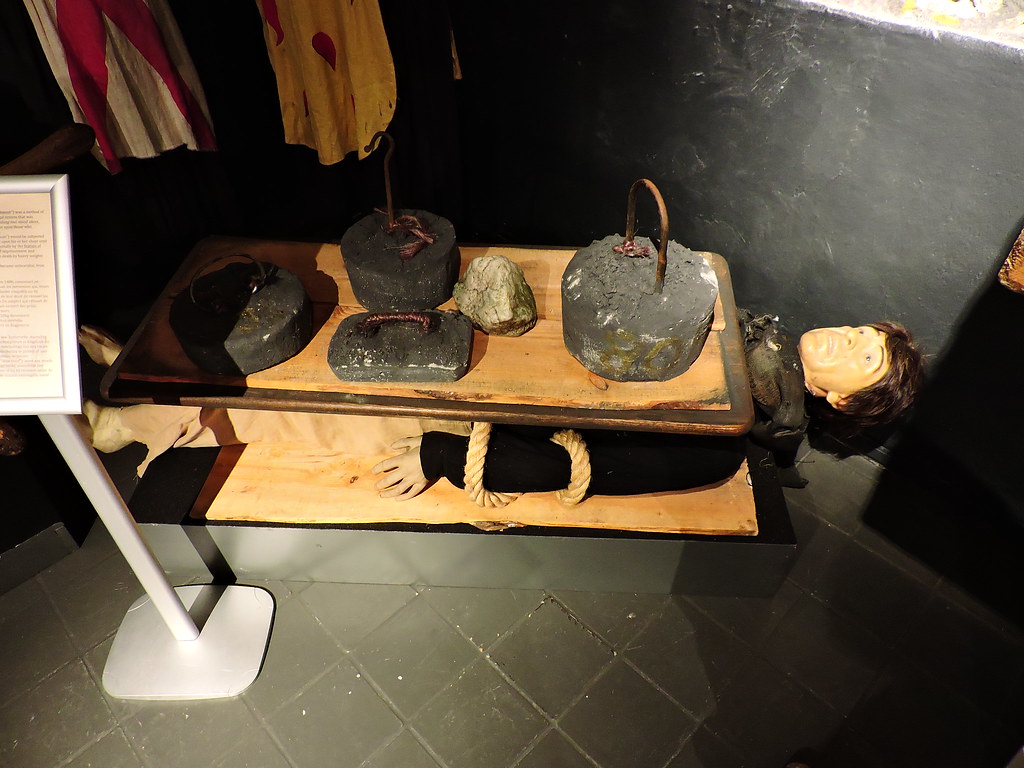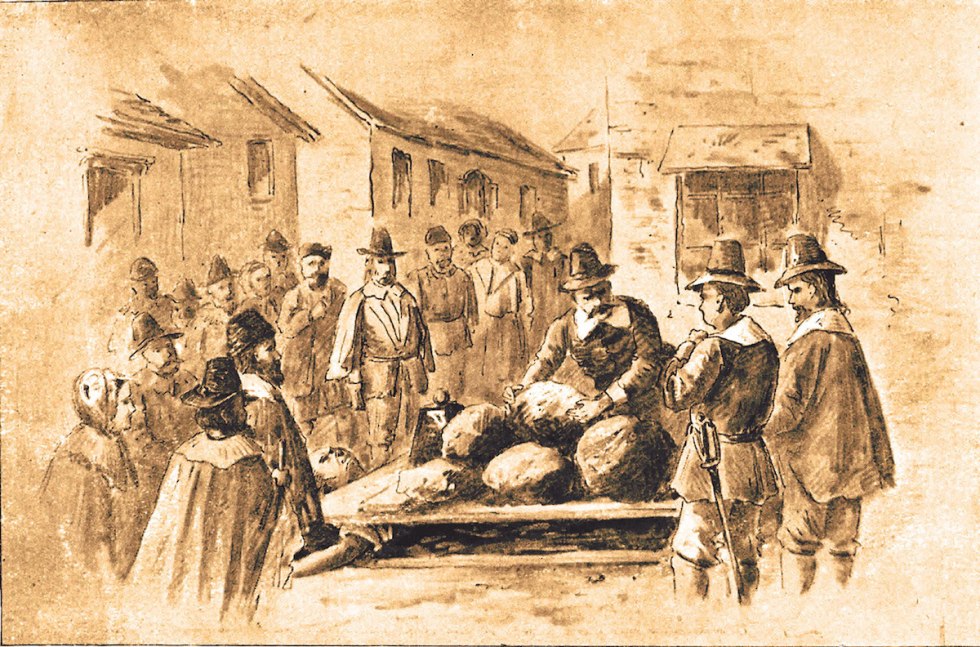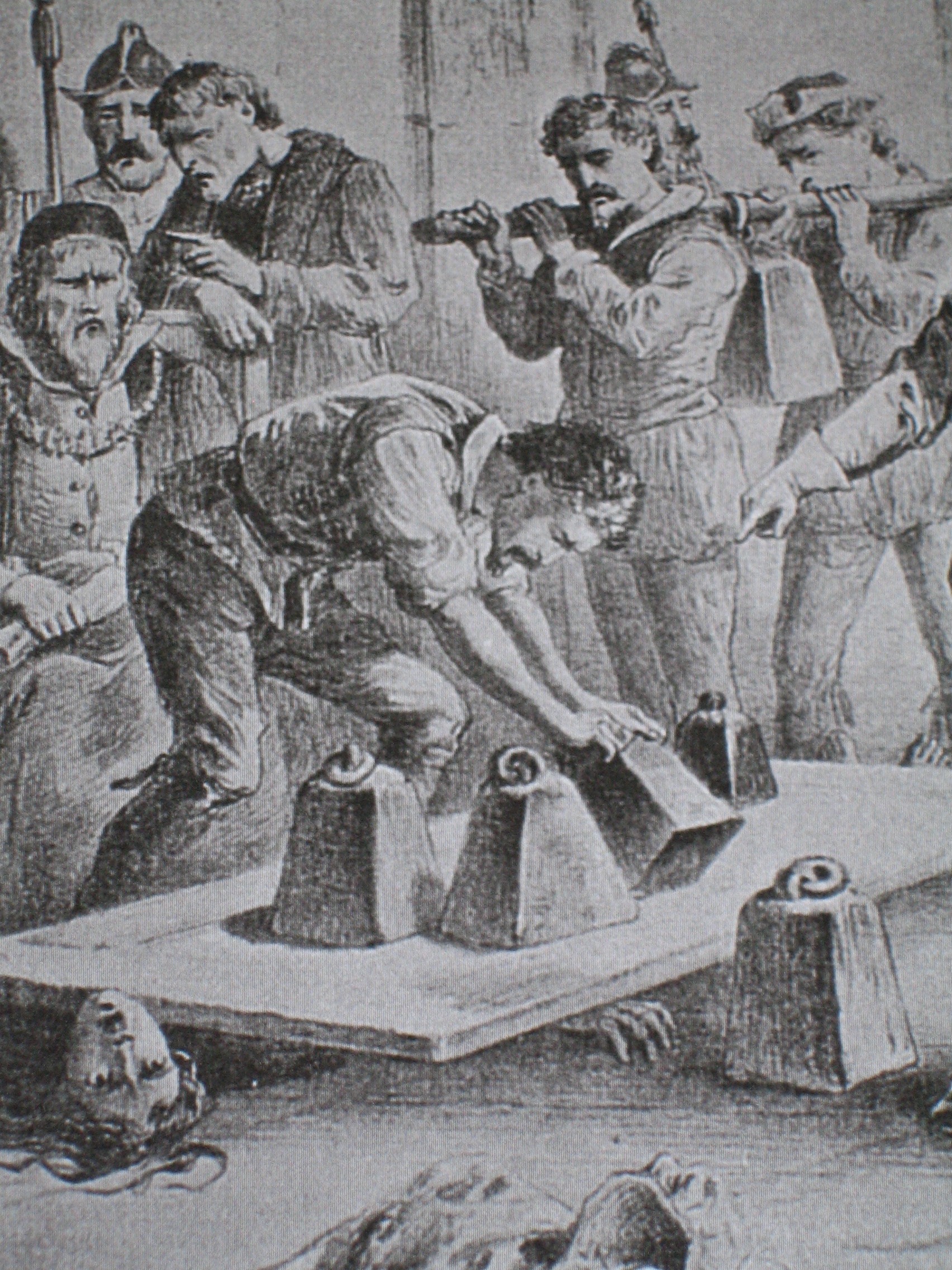The chilling concept of peine forte et dure, a form of torture used in medieval justice systems, finds its way into Sir Arthur Conan Doyle’s final Sherlock Holmes novel, The Valley of Fear. This gruesome practice, French for “strong and forceful punishment,” was historically significant and culturally impactful. This article delves into the origins, applications, and eventual abolishment of peine forte et dure, drawing connections to various historical events and literary works.
The Valley of Fear: A Brief Overview

The Valley of Fear is structured into two distinct parts. The first part is a classic English murder mystery, while the second part is a flashback to the USA, detailing the earlier life of a key character from the first part. As the mystery unfolds, Sherlock Holmes sets a trap for one of the suspects, who, despite being caught, refuses to cooperate. Holmes suggests that the suspect explain himself, but he adamantly refuses, stating, “Well, all I can say is that if there’s any secret here it is not my secret, and I am not the man to give it away.” Holmes warns him of detention until a warrant is served, to which the suspect defiantly responds, “You can do what you damn please about that.”
Watson, Holmes’ loyal companion, observes that the suspect’s resolute demeanor indicates that no peine forte et dure would force him to confess. The deadlock is eventually broken as the truth emerges from an unexpected source, allowing Holmes to solve the mystery.
Understanding Peine Forte et Dure

Medieval Justice Systems
In medieval times, justice was far from the structured legal systems we know today. Authorities often relied on divine intervention to determine guilt, using methods designed to invoke God’s judgment. One such method involved binding the accused’s hands to a hot rock or tool, causing severe burns. If the burns healed cleanly, it was seen as divine approval of innocence; if they festered, it was proof of guilt, leading to execution.
Another method involved lowering the accused into water. Floating signified guilt, while sinking (with God’s blessing) indicated innocence. These practices were disrupted after the Fourth Lateran Council of 1215, led by Pope Innocent III, who banned clergy participation in these ordeals, forcing civil authorities to devise new means of determining guilt.
The Evolution of Torture
Without divine judgment, judges needed new methods to coerce confessions. During the reign of Henry IV in the 13th century, peine forte et dure emerged as a form of torture to force the accused to plead. If the accused remained silent, heavy weights were placed on their chest until they either confessed or died. An important legal distinction evolved: if the defendant died without pleading, their family could inherit their property. However, if they confessed, their property would escheat to the crown, providing a grim incentive to endure the torture for the family’s benefit.

The Gruesome Process
The process of peine forte et dure was horrific. The accused would lie spread-eagle with a rock under their spine. A board was placed on their chest, and weights were gradually added. Skilled operators could prolong this torture for days, providing the accused with minimal sustenance. Eventually, the ribcage would collapse under the weight, leading to death.
A 15th-century description detailed the process: the subject would lie with limbs bound and weights added until the body could bear no more. This method persisted for centuries, ending in England in 1772 and last recorded in 1741.
Peine Forte et Dure in North America
The Salem Witch Trials
In North America, peine forte et dure was part of the legal system but rarely used. One notable case was during the Salem witch trials in 1692. Giles Corey, an elderly farmer, was subjected to pressing after refusing to plead to charges of witchcraft. His wife, a Roman Catholic known for reading books, had been accused, and Corey stood mute to protect his property for his heirs. His last words, “Put on more weight,” exemplified his defiance.
Execution by Elephants
In Southeast Asia and India, elephants were used for similar purposes. These skilled animals, under the direction of handlers, could kill slowly or quickly, making the process even more dreadful. European colonists, shocked by these methods, eventually put an end to such practices around 1900.
The Influence on the U.S. Constitution

The horrors of peine forte et dure influenced the drafting of the U.S. Constitution. Article III, Section 3, states: “The Congress shall have power to declare the Punishment of Treason, but no Attainder of Treason shall work Corruption of Blood or Forfeiture except during the Life of the Person attained.” This clause was discussed in Federalist Paper No. 84 by Alexander Hamilton, addressing the issue of “corruption of blood.”
Cultural References and Literary Connections
The Crucible and Marilyn Monroe
Arthur Miller’s play, The Crucible, draws a parallel between the Salem witch trials and the House Un-American Activities Committee (HUAC) investigations. Miller’s experience with HUAC is allegorically represented through the character of Giles Corey. Interestingly, Miller was married to Marilyn Monroe, one of the most famous blonde bombshells, during the height of his career.
The Adventure of the Engineer’s Thumb
Peine forte et dure also appears in another Sherlock Holmes story, The Adventure of the Engineer’s Thumb. In this tale, hydraulic engineer Victor Hatherley is hired by counterfeiters and narrowly escapes being crushed in a hydraulic press. This scenario echoes the torturous methods of peine forte et dure, although Hatherley survives, unlike many historical victims.
Conclusion
Peine forte et dure represents a dark chapter in the history of justice. From medieval Europe to colonial America and beyond, this method of torture was a cruel means to extract confessions and determine guilt. Its legacy influenced legal frameworks and inspired literary works, reminding us of the brutality that once defined human justice. Understanding this history underscores the importance of humane and fair legal practices in the modern world.